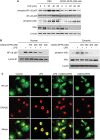A unique tolerizing dendritic cell phenotype induced by the synthetic triterpenoid CDDO-DFPA (RTA-408) is protective against EAE
- PMID: 28851867
- PMCID: PMC5575165
- DOI: 10.1038/s41598-017-06907-4
A unique tolerizing dendritic cell phenotype induced by the synthetic triterpenoid CDDO-DFPA (RTA-408) is protective against EAE
Abstract
Tolerogenic dendritic cells (DCs) have emerged as relevant clinical targets for the treatment of multiple sclerosis and other autoimmune disorders. However, the pathways essential for conferring the tolerizing DC phenotype and optimal methods for their induction remain an intense area of research. Triterpenoids are a class of small molecules with potent immunomodulatory activity linked to activation of Nrf2 target genes, and can also suppress the manifestations of experimental autoimmune encephalomyelitis (EAE). Here we demonstrate that DCs are a principal target of the immune modulating activity of triterpenoids in the context of EAE. Exposure of DCs to the new class of triterpenoid CDDO-DFPA (RTA-408) results in the induction of HO-1, TGF-β, and IL-10, as well as the repression of NF-κB, EDN-1 and pro-inflammatory cytokines IL-6, IL-12, and TNFα. CDDO-DFPA exposed DCs retained expression of surface ligands and capacity for antigen uptake but were impaired to induce Th1 and Th17 cells. TGF-β was identified as the factor mediating suppression of T cell proliferation by CDDO-DFPA pretreated DCs, which failed to passively induce EAE. These findings demonstrate the potential therapeutic utility of CDDO-DFPA in the treatment and prevention of autoimmune disorders, and its capacity to induce tolerance via modulation of the DC phenotype.
Conflict of interest statement
The authors declare that they have no competing interests.
Figures







Similar articles
-
Nrf2-mediated metabolic reprogramming of tolerogenic dendritic cells is protective against aplastic anemia.J Autoimmun. 2018 Nov;94:33-44. doi: 10.1016/j.jaut.2018.07.005. Epub 2018 Jul 17. J Autoimmun. 2018. PMID: 30025621
-
Selective depletion of CD11c+ CD11b+ dendritic cells partially abrogates tolerogenic effects of intravenous MOG in murine EAE.Eur J Immunol. 2016 Oct;46(10):2454-2466. doi: 10.1002/eji.201546274. Eur J Immunol. 2016. PMID: 27338697 Free PMC article.
-
Sulforaphane protects from T cell-mediated autoimmune disease by inhibition of IL-23 and IL-12 in dendritic cells.J Immunol. 2014 Apr 15;192(8):3530-9. doi: 10.4049/jimmunol.1300556. Epub 2014 Mar 17. J Immunol. 2014. PMID: 24639357
-
Induction of Interleukin-10 Producing Dendritic Cells As a Tool to Suppress Allergen-Specific T Helper 2 Responses.Front Immunol. 2018 Mar 19;9:455. doi: 10.3389/fimmu.2018.00455. eCollection 2018. Front Immunol. 2018. PMID: 29616018 Free PMC article. Review.
-
Generation of tolerogenic dendritic cells via the E-cadherin/beta-catenin-signaling pathway.Immunol Res. 2010 Mar;46(1-3):72-8. doi: 10.1007/s12026-009-8126-5. Immunol Res. 2010. PMID: 19771400 Review.
Cited by
-
The role of natural products in revealing NRF2 function.Nat Prod Rep. 2020 Jun 1;37(6):797-826. doi: 10.1039/c9np00061e. Epub 2020 May 13. Nat Prod Rep. 2020. PMID: 32400766 Free PMC article. Review.
-
Positive allosteric modulation of indoleamine 2,3-dioxygenase 1 restrains neuroinflammation.Proc Natl Acad Sci U S A. 2020 Feb 18;117(7):3848-3857. doi: 10.1073/pnas.1918215117. Epub 2020 Feb 5. Proc Natl Acad Sci U S A. 2020. PMID: 32024760 Free PMC article.
-
Omaveloxolone Ameliorates Cognitive Deficits by Inhibiting Apoptosis and Neuroinflammation in APP/PS1 Mice.Mol Neurobiol. 2025 Feb;62(2):2191-2202. doi: 10.1007/s12035-024-04361-8. Epub 2024 Aug 1. Mol Neurobiol. 2025. PMID: 39088030
-
Synthesis and Anticancer Activity of CDDO and CDDO-Me, Two Derivatives of Natural Triterpenoids.Molecules. 2019 Nov 13;24(22):4097. doi: 10.3390/molecules24224097. Molecules. 2019. PMID: 31766211 Free PMC article. Review.
-
Naturally Derived Heme-Oxygenase 1 Inducers and Their Therapeutic Application to Immune-Mediated Diseases.Front Immunol. 2020 Jul 23;11:1467. doi: 10.3389/fimmu.2020.01467. eCollection 2020. Front Immunol. 2020. PMID: 32849503 Free PMC article. Review.
References
Publication types
MeSH terms
Substances
LinkOut - more resources
Full Text Sources
Other Literature Sources

